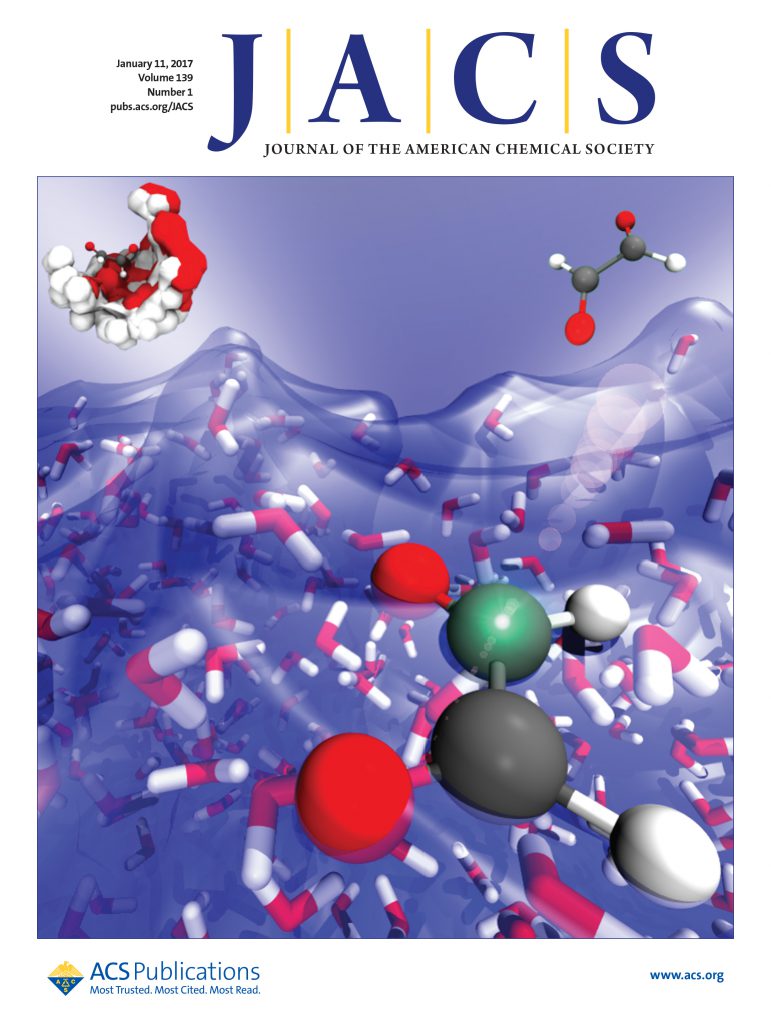Correction to “Synthesis of Cationic Cyclic Oligo(disulfide)s via Cyclo-Depolymerization: A Redox-Responsive and Potent Antibacterial Reagent”
IF 15.6
1区 化学
Q1 CHEMISTRY, MULTIDISCIPLINARY
引用次数: 0
Abstract
In the original publication, the H&E staining image for the Rifampicin group in Figure 8E was incorrectly duplicated as the CCO2-64% group. The corrected Figure 8E below now accurately displays the H&E staining of the Rifampicin group. The conclusions remain valid since the wound analysis relied on the complete data set in Figure S64. Figure 8. In vivo antimicrobial activity study of CCOs in the murine full-thickness wound infection model (n = 4 mice for each group, two wounds in each mouse). (A) Schematic diagram of the full-thickness wound infection model induced by S. aureus. The treatment groups were CCO1, CCO2-64%, rifampicin (positive control), and saline (negative control). (B) Bacterial loading in the wound treated with 20 μL of different solutions (400 × MIC of CCO1, 400 × MIC of CCO2-64%, 400 × MIC of rifampicin, and saline, respectively) and n = 6 wounds per group. All statistical significance as determined by the two-tailed t-test, *p < 0.05, **p < 0.01, ***p < 0.001, ****p < 0.0001. (C) Changes in wound sizes in the wound infection model after being treated with CCO1, CCO2-64%, rifampicin, and saline at 0, 1, 3, 5, and 7 days (n = 8 wounds per group). (D) Digital images of bacterium-infected mice skin wounds with different treatments. (E) Representative wound histological analysis after treatment for 7 days by H&E staining and Masson staining in the wound infection model. The scale bar is 100 μm. This article has not yet been cited by other publications.

更正“环解聚法合成阳离子环低聚(二硫):一种具有氧化还原反应的高效抗菌试剂”
在原始出版物中,图8E中利福平组的H&;E染色图像被错误地复制为CCO2-64%组。更正后的图8E现在准确地显示了利福平组的H&;E染色。结论仍然有效,因为伤口分析依赖于图S64中的完整数据集。图8。CCOs在小鼠全层创面感染模型中的体内抗菌活性研究(每组4只,每只2个创面)。(A)金黄色葡萄球菌诱导的全层创面感染模型示意图。治疗组为CCO1、CCO2-64%、利福平(阳性对照)、生理盐水(阴性对照)。(B) 20 μL不同溶液(分别为400 × MIC CCO1、400 × MIC CCO2-64%、400 × MIC利福平、生理盐水)处理创面细菌载量,每组n = 6个创面。经双尾t检验,*p <;0.05, **p <;0.01, ***p <;0.001, ****p <;0.0001. (C) CCO1、CCO2-64%、利福平、生理盐水治疗创面感染模型0、1、3、5、7 d创面大小变化(每组8个创面)。(D)不同处理方式下细菌感染小鼠皮肤伤口的数字图像。(E)创面感染模型H&;E染色和Masson染色,治疗7天后代表性创面组织学分析。标尺尺寸为100 μm。这篇文章尚未被其他出版物引用。
本文章由计算机程序翻译,如有差异,请以英文原文为准。
求助全文
约1分钟内获得全文
求助全文
来源期刊
CiteScore
24.40
自引率
6.00%
发文量
2398
审稿时长
1.6 months
期刊介绍:
The flagship journal of the American Chemical Society, known as the Journal of the American Chemical Society (JACS), has been a prestigious publication since its establishment in 1879. It holds a preeminent position in the field of chemistry and related interdisciplinary sciences. JACS is committed to disseminating cutting-edge research papers, covering a wide range of topics, and encompasses approximately 19,000 pages of Articles, Communications, and Perspectives annually. With a weekly publication frequency, JACS plays a vital role in advancing the field of chemistry by providing essential research.

 求助内容:
求助内容: 应助结果提醒方式:
应助结果提醒方式:


